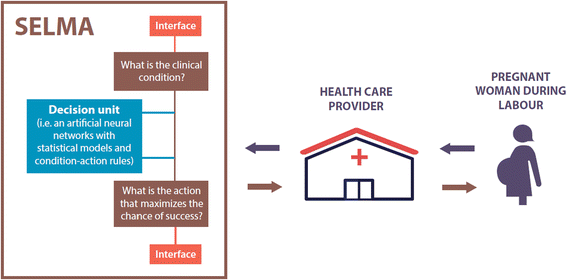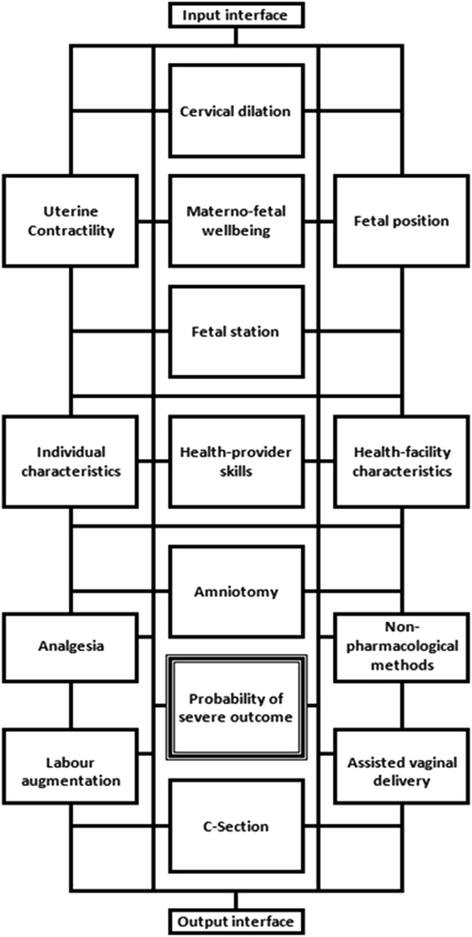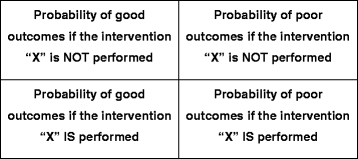The development of a Simplified, Effective, Labour Monitoring-to-Action (SELMA) tool for Better Outcomes in Labour Difficulty (BOLD): study protocol
- PMID: 26006758
- PMCID: PMC4448543
- DOI: 10.1186/s12978-015-0029-4
The development of a Simplified, Effective, Labour Monitoring-to-Action (SELMA) tool for Better Outcomes in Labour Difficulty (BOLD): study protocol
Abstract
Background: The partograph is currently the main tool available to support decision-making of health professionals during labour. However, the rate of appropriate use of the partograph is disappointingly low. Apart from limitations that are associated with partograph use, evidence of positive impact on labour-related health outcomes is lacking. The main goal of this study is to develop a Simplified, Effective, Labour Monitoring-to-Action (SELMA) tool. The primary objectives are: to identify the essential elements of intrapartum monitoring that trigger the decision to use interventions aimed at preventing poor labour outcomes; to develop a simplified, monitoring-to-action algorithm for labour management; and to compare the diagnostic performance of SELMA and partograph algorithms as tools to identify women who are likely to develop poor labour-related outcomes.
Methods/design: A prospective cohort study will be conducted in eight health facilities in Nigeria and Uganda (four facilities from each country). All women admitted for vaginal birth will comprise the study population (estimated sample size: 7,812 women). Data will be collected on maternal characteristics on admission, labour events and pregnancy outcomes by trained research assistants at the participating health facilities. Prediction models will be developed to identify women at risk of intrapartum-related perinatal death or morbidity (primary outcomes) throughout the course of labour. These predictions models will be used to assemble a decision-support tool that will be able to suggest the best course of action to avert adverse outcomes during the course of labour. To develop this set of prediction models, we will use up-to-date techniques of prognostic research, including identification of important predictors, assigning of relative weights to each predictor, estimation of the predictive performance of the model through calibration and discrimination, and determination of its potential for application using internal validation techniques.
Discussion: This research offers an opportunity to revisit the theoretical basis of the partograph. It is envisioned that the final product would help providers overcome the challenging tasks of promptly interpreting complex labour information and deriving appropriate clinical actions, and thus increase efficiency of the care process, enhance providers' competence and ultimately improve labour outcomes. Please see related articles ' http://dx.doi.org/10.1186/s12978-015-0027-6 ' and ' http://dx.doi.org/10.1186/s12978-015-0028-5 '.
Figures



Similar articles
-
Formative research and development of innovative tools for "Better Outcomes in Labour Difficulty" (BOLD): study protocol.Reprod Health. 2015 May 26;12:50. doi: 10.1186/s12978-015-0028-5. Reprod Health. 2015. PMID: 26006320 Free PMC article.
-
WHO Better Outcomes in Labour Difficulty (BOLD) project: innovating to improve quality of care around the time of childbirth.Reprod Health. 2015 May 26;12:48. doi: 10.1186/s12978-015-0027-6. Reprod Health. 2015. PMID: 26006170 Free PMC article.
-
Cervical dilatation over time is a poor predictor of severe adverse birth outcomes: a diagnostic accuracy study.BJOG. 2018 Jul;125(8):991-1000. doi: 10.1111/1471-0528.15205. Epub 2018 Apr 17. BJOG. 2018. PMID: 29498187 Free PMC article.
-
Effect of partograph use on outcomes for women in spontaneous labour at term and their babies.Cochrane Database Syst Rev. 2018 Aug 6;8(8):CD005461. doi: 10.1002/14651858.CD005461.pub5. Cochrane Database Syst Rev. 2018. PMID: 30080256 Free PMC article.
-
Folic acid supplementation and malaria susceptibility and severity among people taking antifolate antimalarial drugs in endemic areas.Cochrane Database Syst Rev. 2022 Feb 1;2(2022):CD014217. doi: 10.1002/14651858.CD014217. Cochrane Database Syst Rev. 2022. PMID: 36321557 Free PMC article.
Cited by
-
Development of a novel labour monitoring tool: Improving labour care quality in the Indian setting.J Family Med Prim Care. 2024 Mar;13(3):869-874. doi: 10.4103/jfmpc.jfmpc_862_23. Epub 2024 Apr 4. J Family Med Prim Care. 2024. PMID: 38736837 Free PMC article.
-
Development of caesarean section prediction models: secondary analysis of a prospective cohort study in two sub-Saharan African countries.Reprod Health. 2019 Nov 14;16(1):165. doi: 10.1186/s12978-019-0832-4. Reprod Health. 2019. PMID: 31727102 Free PMC article.
-
Insights into the design, development and implementation of a novel digital health tool for skilled birth attendants to support quality maternity care in Kenya.Fam Med Community Health. 2021 Aug;9(3):e000845. doi: 10.1136/fmch-2020-000845. Fam Med Community Health. 2021. PMID: 34344764 Free PMC article. No abstract available.
-
Computerized Childbirth Monitoring Tools for Health Care Providers Managing Labor: A Scoping Review.JMIR Med Inform. 2017 Jun 15;5(2):e14. doi: 10.2196/medinform.6959. JMIR Med Inform. 2017. PMID: 28619702 Free PMC article.
-
A realist review of the partograph: when and how does it work for labour monitoring?BMC Pregnancy Childbirth. 2017 Jan 13;17(1):31. doi: 10.1186/s12884-016-1213-4. BMC Pregnancy Childbirth. 2017. PMID: 28086823 Free PMC article.
References
-
- Khan KS, Wojdyla D, Say L, Gulmezoglu AM, Van Look PF. WHO analysis of causes of maternal death: a systematic review. Lancet. 2006;367(9516):1066–74. - PubMed
-
- Lawn JE, Lee AC, Kinney M, Sibley L, Carlo WA, Paul VK, et al. Two million intrapartum-related stillbirths and neonatal deaths: where, why, and what can be done? Int J Gynaecol Obstet. 2009;107(Suppl 1):S5–18. - PubMed
-
- Levin K, Kabagema J. Use of the partograph: effectiveness, training, modifications, and barriers. 2011. Engenderhealth.
-
- United Nations . Global Strategy for Women’s and Children’s Health. New York: United Nations; 2010.
Publication types
MeSH terms
Grants and funding
LinkOut - more resources
Full Text Sources
Other Literature Sources
Medical

